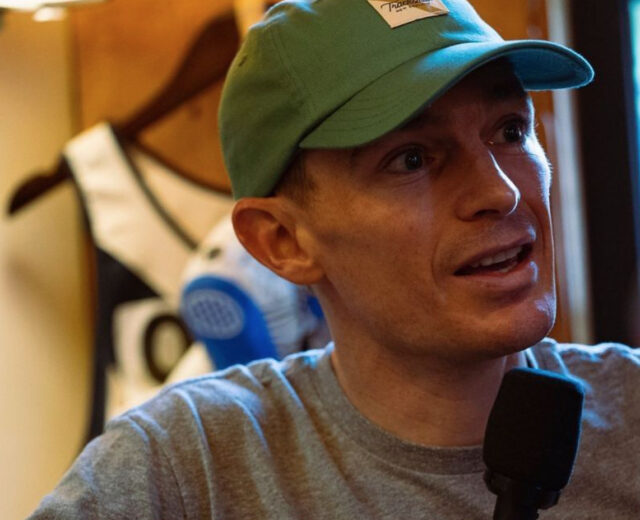Traditional training plans focus on one distance at a time, whether it’s a fast 5k or a marathon PR. But what if your race schedule looks a little less traditional? Learn how to tackle your goals for multiple races that require varying approaches to training.
Runners often focus on building up to one race distance in a season, which allows for a more traditional training structure. But sometimes we’re drawn to a variety of races that appear to require approaches that differ from one another. Whether that’s the mile and the marathon, or a flat marathon and a hilly ultra, there are ways to tackle the challenges of both in the same season.
Today’s podcast answers a question from a listener named Mike who is curious about combining a fast road marathon and a hilly 50-mile ultramarathon into one training cycle. Is this possible? Is it risky to race a 50 miler only 2 months after a marathon? There are a number of things to consider when attempting multiple efforts such as these, including sequencing of training, recovery, nutrition, and strength training.
On the podcast today I have my friend and former competitor, Mario Fraioli, to discuss how to approach training for this type of endeavor. Mario is runner, coach, and host of The Morning Shakeout podcast. He also writes the incredibly popular newsletter of the same name.
Mario Fraioli on training for a combination of distances
Over the past few months, Mario has run his own unique combination of races, including the Boston Marathon and an indoor mile. As an incredibly competitive Master’s runner, Mario had strong performances at both, running a 4:30 for the mile and a 2:34 at the Boston Marathon.
Mario and I discuss the best training approach for runners like Mike who are attempting two ambitious efforts in one training cycle and address questions including:
- Is it best to do one longer cycle or two shorter training cycles?
- What’s the best way to build in recovery after the marathon?
- How should you balance flat road training with hilly trail preparation?
- If you have a history of running injuries, what are the caveats?
- What are the mental challenges for this type of training?
Mario is thoughtful and insightful, and his experience and knowledge will help prepare you for whatever distance you’re racing. I know you’ll enjoy our conversation!
Subscribe to the podcast in Apple Podcasts, Spotify, Stitcher, iHeartRadio, or Google Play
Links & Resources from the Show:
- Learn more about Mario
- Subscribe to The Morning Shakeout
- Listen to The Morning Shakeout podcast
- Follow Mario on Instagram and Twitter
- Join The Morning Shakeout on Strava
- Looking for a training program for your next race? Let me help.
Thank you DrinkLMNT!
A big thanks to DrinkLMNT for their support of this episode! They make electrolyte drinks for athletes and low-carb folks with no sugar, artificial ingredients, or colors. And you can get a free sampler pack of 4 flavors and 8 individual packets when you pay $5 in shipping.
DrinkLMNT’s products have some of the highest sodium concentrations that you can find. Anybody who runs a lot knows that sodium, as well as other electrolytes like magnesium and potassium, are essential to our performance and how we feel throughout the day.
The citrus flavor has quickly become my favorite. I’m drinking one a day now to help me get enough fluids in our dry Colorado air. It’s tasty and delicious and I find that I’m not peeing every 45 minutes throughout the day, which might be an indication I wasn’t eating enough sodium.
There’s now mounting evidence that higher sodium intake levels are not unhealthy – and athletes need substantially more than your typical sedentary person. Of course, ask your doctor if you’re worried. But for those athletes running outside in the heat, an electrolyte replacement makes a lot of sense. So check out DrinkLMNT to try their new flavor or get a free sampler pack.
Thank you to our Performance Training Journal!
We’re also brought to you by our very own Performance Training Journal, which is now available on Amazon. Since I started running in 1998, I’ve kept a hardcopy training journal. Holding a tangible log, writing in it daily, and reflecting on the ups and downs of running is a surefire way to improve.
This hardcopy training journal helps you focus on the training metrics that matter, prioritizes a long-term outlook so you don’t take any shortcuts, and maintains your motivation with strategic self-praise. With a no-frills, functional design, the Performance Training Journal includes coaching advice on racing, injury prevention, strength training, and more. It will guide you through race scheduling, how to plan your race morning, the best workouts for endurance runners, and encourage you to track your personal bests over time.
You have the space to make this journal your own whether you’re a new runner or a professional, a trail or road runner, or a mid-distance specialist or ultra marathoner. So don’t just track your running, learn from it with the Performance Training Journal! Check it out today on Amazon.
